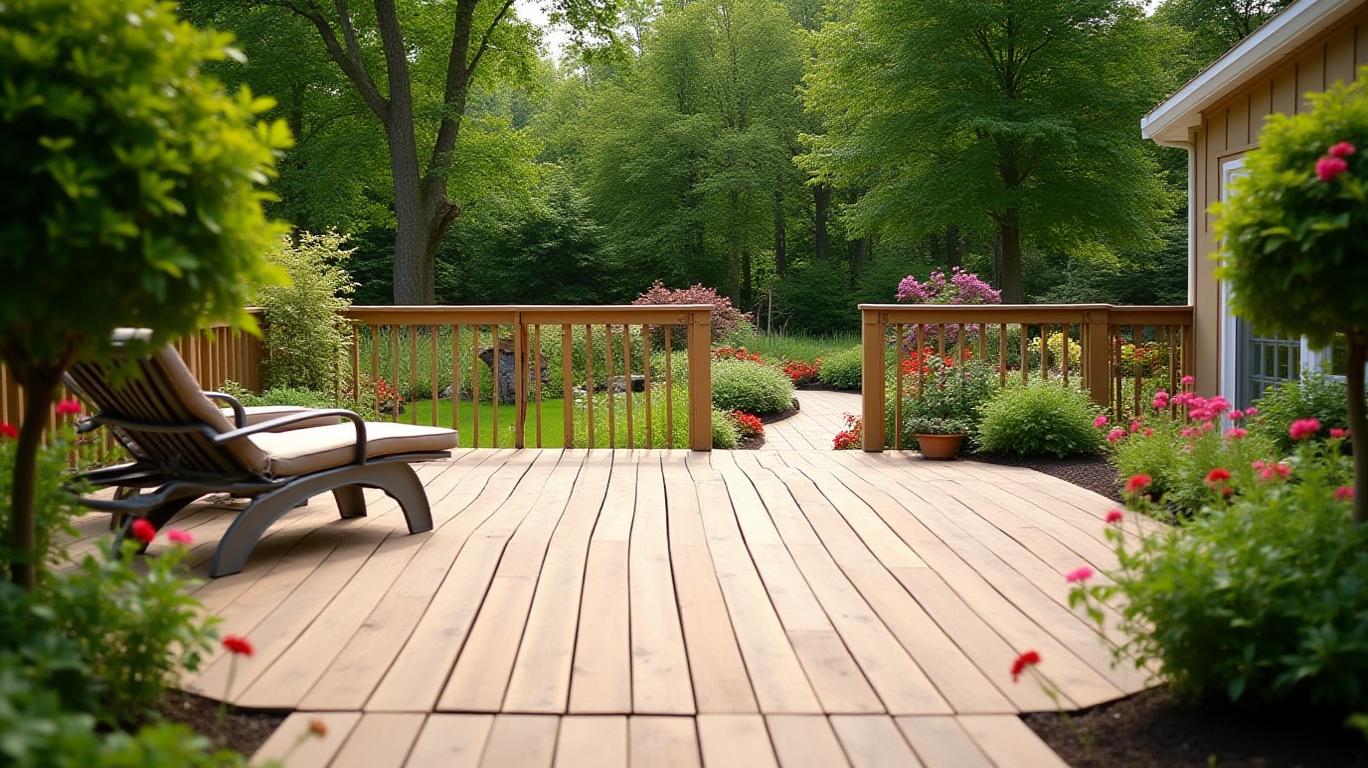Trex: Riding the Structural Shift to Composite Decking and Outsmarting Tariffs
The outdoor living market is undergoing a quiet revolution. As homeowners worldwide prioritize low-maintenance, durable, and eco-friendly materials for their decks and patios,
Co. (TREX) stands at the epicenter of this transformation. With its innovative composites and strategic dominance in distribution, Trex is not just adapting to trends—it's defining them. This article explores why Trex is a buy for investors seeking exposure to secular growth in outdoor living and a company uniquely insulated from trade headwinds.
The Structural Shift: Wood's Decline, Composites' Rise
The transition from traditional wood to composite decking is no longer a niche trend. Data shows the global composite decking market is projected to grow from $4.2 billion in 2023 to $16.99 billion by 2032, at a 16.8% CAGR (SQMIG15F2140 report). While wood still commands 71% of the decking market, its dominance is eroding as consumers demand materials that resist rot, pests, and fading.
Trex's capped composite technology—a protective shell over its core—has emerged as the gold standard in durability and aesthetics. Unlike wood, which requires annual staining and sealing, Trex's products require minimal maintenance, aligning perfectly with the “set it and forget it” ethos of modern homeowners. The company's use of recycled materials (e.g., 99% of its plastic waste comes from post-consumer sources) also taps into rising environmental consciousness, a trend that will only intensify as governments tighten sustainability mandates.
Distribution Powerhouse: Home Depot and Lowe's as Growth Engines
Trex's strategic partnerships with Home Depot (HD) and Lowe's (LOW) give it unmatched reach. These retailers account for 60% of its sales, and Trex's products consistently lead in category sales at these stores. Beyond big-box stores, Trex has expanded its reach through regional partnerships, such as its 2022 collaboration with Mid-Am Building Supply to distribute MoistureShield composites in the U.S. South. This network ensures Trex remains the go-to brand for contractors and DIYers alike, while smaller competitors struggle to scale distribution.
Trex's revenue grew 14% annually from 2020 to 2023, outpacing the growth of its retail partners, demonstrating its ability to capture share in a transitioning market.
Tariff Resilience: Local Production Shields Margins
While trade tensions loom, Trex has insulated itself through localized production. Over 85% of its products are made in North America, primarily at its Ohio plant and a new facility in Kentucky. This reduces reliance on imports and avoids the tariff headaches plaguing peers like China-based manufacturers. For example, when tariffs spiked in 2022, Trex's U.S. competitors saw margin compression, but Trex's margins held steady due to its domestic supply chain.
The company's vertical integration—from resin production to finished goods—also gives it pricing power. Even as lumber prices fluctuate, Trex's composite materials remain a stable, cost-effective alternative. This resilience positions Trex to thrive as trade disputes remain unresolved.
Premium Positioning and the Macro Recovery
Trex's products command a 20-30% price premium over wood, yet demand remains robust. This pricing power stems from its brand equity and product differentiation. As the economy recovers from cyclical slowdowns, Trex is poised to benefit disproportionately from a rebound in housing starts and outdoor renovations.
The non-residential segment—hotels, marinas, and parks—offers another tailwind. With composites' low-maintenance profile ideal for commercial use, this segment is growing at a 16.8% CAGR, faster than the residential market. Trex's presence in these spaces, through partnerships like its work with Universal Forest Products, is a key growth lever.
Investment Case: Buy Before the Surge
Trex's valuation appears reasonable given its growth profile. At a forward P/E of 18x, it trades below its five-year average of 22x, despite accelerating earnings growth. Meanwhile, its debt-to-equity ratio of 0.4x leaves ample room for reinvestment.
The stock has underperformed the market since 2022 due to macroeconomic uncertainty, but this presents a buying opportunity. As the economy stabilizes and outdoor living demand rebounds, Trex's share price could re-rate to reflect its secular growth story.
Conclusion: A Structural Play with Margin of Safety
Trex is not just a beneficiary of trends—it's a catalyst for them. Its innovation, distribution strength, and tariff resilience make it a rare blend of growth and stability. With a market transitioning decisively toward composites and Trex's premium positioning intact, now is the time to position for what could be a multiyear outperformance cycle.
For investors seeking exposure to outdoor living's structural shift and a company insulated from trade risks, Trex is a compelling buy at current levels. The deck is stacked in its favor.

Comments
No comments yet